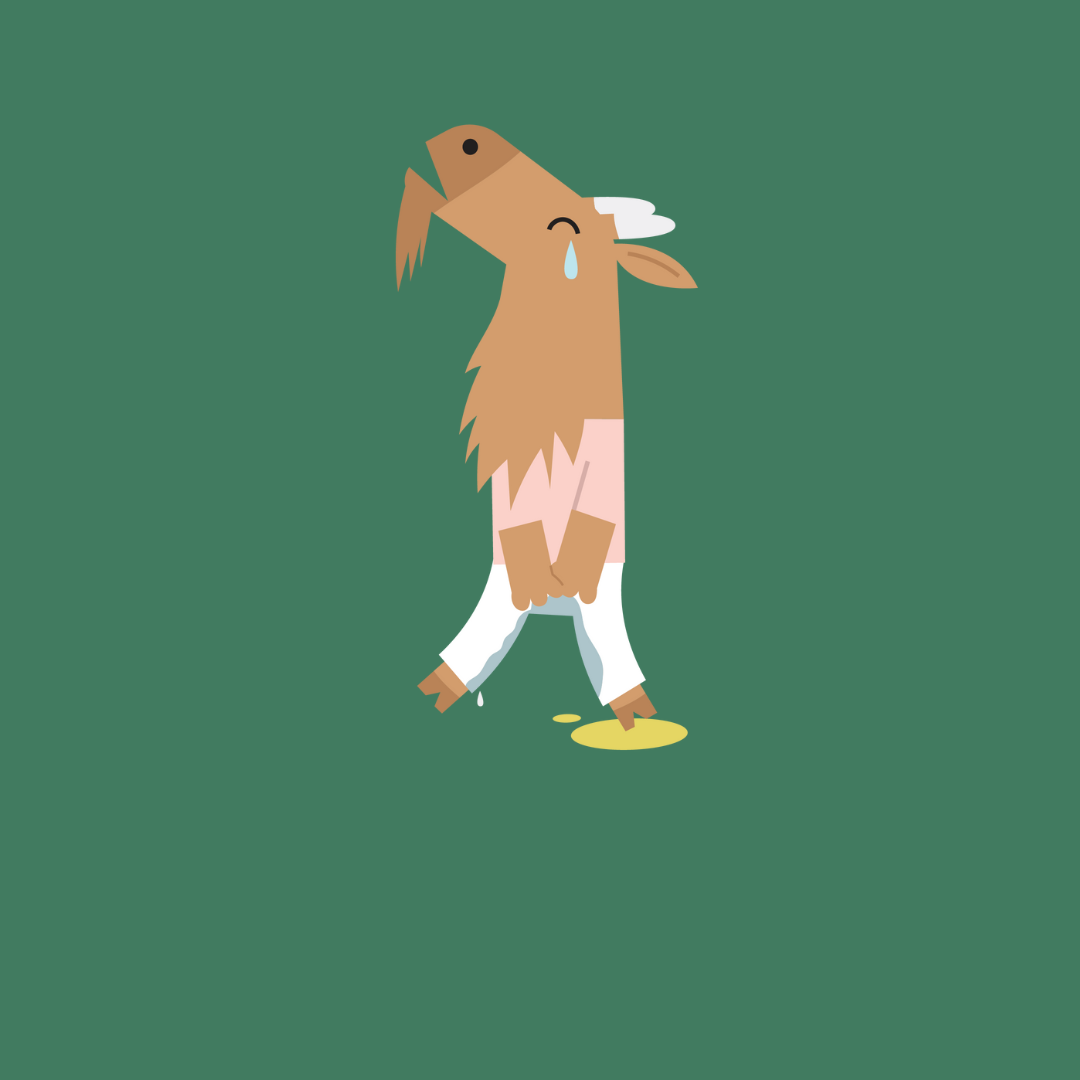Poop anxiety: My child is afraid to poop without a diaper
Many children who can pee well on the potty or toilet prefer to use a diaper to poop. We call this poop anxiety. Sometimes it is because your child finds it exciting, sometimes because poop has hurt once. This article explains how to recognize poop fear, why it is normal, and how to help step by step to regain confidence - without struggle or pressure.
How do you recognize poop anxiety?
- Holding: child crawls in a corner, wiggles, squeezes buttocks together, but refuses potty/toilet.
- Diaper asking: child waits until a diaper can be put on and only then poops.
- Anxiety behavior: crying, saying "ouch" without pain, stiffening at potty or toilet.
- Constipation: hard poop, small bits in pants, pain → even more holding up.
Poop anxiety is not stubbornness, but tension. Your child feels loss of control or remembers pain. Peace and safety are key.
Why pooping is harder than peeing
Peeing often succeeds sooner, but pooping requires more relaxation. It takes longer, feels more vulnerable and can hurt. One painful experience can be enough to lock in anxiety. That's why it's important that you make the step small and provide safety.
First aid: safety and predictability
- Foot support: potty or toilet with stool → relaxes pelvic floor.
- Small sitting moments: after eating 1-3 minutes of quiet sitting with booklet.
- Scripts: "We're going to sit down for a while. Your body will tell you when it's time."
- Neutral to pants poop: "Oops, poop in your pants. We'll clean it up. Done."
- Compliment on commitment: "Nice that you sat quietly."
Step-by-step plan: from diaper to potty/toilet
- Step 1 - Sitting in diaper: let your child sit on the potty/toilet with diaper on. This gets him/her used to posture and place.
- Step 2 - Cut open diaper: cut open the diaper at the back so the poop falls into the potty. You calmly name what is happening.
- Step 3 - No diaper: when your child is ready, potty/toilet without a diaper. Keep it short and predictable.
- Step 4 - Make flushing predictable: "I'll count to three, then flush." Child may watch or leave for a moment.
Blockage prevention
- Sufficient drinking: spread water and tea throughout the day.
- High-fiber foods: vegetables, fruits, whole grain products.
- Exercise and rhythm: outdoor play and set meal times help the gut.
- For pain: breaking through pain is crucial; seek prompt advice from CB or GP if symptoms persist.
What you better not do
- No pressure ("You have to now!") → creates more tension.
- Not punishing or teasing → increases shame and anxiety.
- Do not let it sit for long → 1-3 minutes is enough, otherwise it becomes a struggle.
Scripts that help
- At start: "We will sit quietly for a while. You set the pace."
- On tension: "It's exciting. I'll stay with you. One minute is enough."
- With diaper: "You may poop in your diaper, but sitting down. That's how we practice."
- Compliment: "How calm and brave you sat."
Frequently asked questions
My child only wants to poop in diaper. Is that a bad thing?
This is allowed temporarily. Use it as an intermediate step: always seated and slowly phase out (cut open diaper → without diaper).
How often does a child need to poop?
It varies. Pay particular attention to comfort: no pain, no noticeable holding up. Several days of hard poop or pain → consult with CB/home doctor.
My child is in pain and scared. What do I do?
Break the pain-anxiety circle: lots of drinking, fiber, short sitting moments with relaxation. Is it still painful? Seek prompt advice from CB/physician.
Should I reward with stickers?
Not necessary. Small compliments ("Glad you sat for a while") work better. Stickers only temporary and for trying, not just for results.
Summary
Poop anxiety is common and does not mean that your child "doesn't want to," but that he or she feels tension. You help with small, predictable steps: first sitting in diaper, then unclipping diaper, then without diaper. Keep it short, safe and friendly, and prevent pain by drinking and fiber adequately. Punishment or pressure is counterproductive. With calm, repetition and support, confidence will grow - and eventually your child will dare to poop without a diaper.

.svg)







